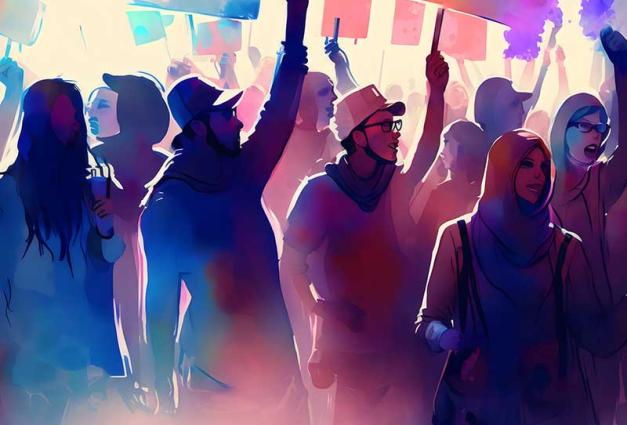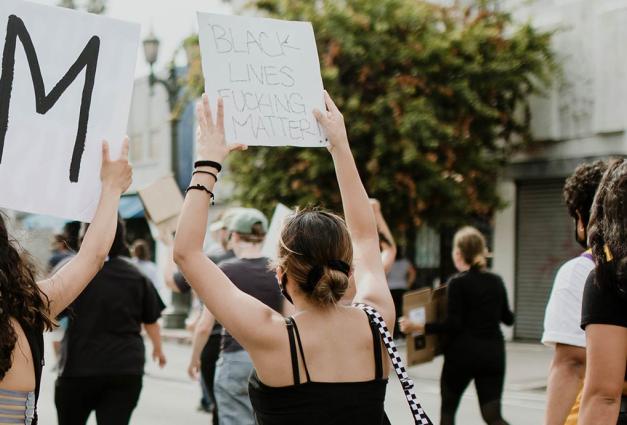We witness many social changes over time—from changes in behavior such as the decline of smoking to shifts in people's hearts and minds on issues like gay marriage. But how does social change spread?
Our recent research, published in the Journal of Experimental Social Psychology, suggests that social change can self-propagate: simply witnessing other people change their behavior leads people to question fundamental beliefs that hold them back from changing themselves. Specifically, seeing change in others makes people think that change is possible for themselves, that it is important, and that it is compatible with who they are.
In prior research, we found that people conform to “dynamic norms ”—information that many people are changing their beliefs or behavior—even when those new trends go against what most people do now. For instance, when people learned that others were increasingly making an effort to limit how much meat they eat, they were less likely to choose meat for lunch—even though the current norm is that most people in the U.S. eat meat for most meals.
This initial research suggested that dynamic norms catalyze social change. But what happens under the hood, psychologically, to promote change? Was it just that people enjoy jumping on the bandwagon? Or could seeing others change have a more profound effect on people’s beliefs about change?
Take smoking. Many smokers don’t attempt to quit because they don’t think they’ll succeed. But what if they learned that many people were changing and had already quit smoking? We found that smokers who learned about others’ successful efforts to quit were more likely to believe they could quit too, and that they could overcome obstacles like withdrawal symptoms. And this increase in confidence led to greater intentions to quit.
Next, we looked at a very different context: viewing screens from electronic devices late at night. It turns out our bedtime obsession with social media, late-night television, and Netflix can disrupt our sleep and cause health problems. Despite this, people often don’t think it’s important enough to change their viewing habits. But what if you learned that a growing number of people were starting to avoid late-night screen use? Would it seem more important then? Our participants thought so, and that increased their interest in reducing their own late-night screen use once they learned others were changing.
A third barrier that can get in the way of change is the perception that changing a particular behavior is inconsistent with who you are. For instance, some men might feel that identifying as a “feminist” is incompatible with being masculine. But our research showed that when male research participants saw information that men were changing and that more were starting to identify as feminist, the participants felt they had more in common with feminists and were more likely to support a key piece of feminist legislation aimed at reducing gender inequities in pay.
In these studies, dynamic norms seemed to affect people’s beliefs and behaviors because they challenged whichever psychological barrier to change loomed largest in each context. It was as if people thought, “since others are changing, then whatever my concern is about change must not be true.” Is that really how it works? Do dynamic norms have a special knack for changing the beliefs that prevent change?
To answer this question, we went back to late-night screen use. We had participants read an op-ed in which we experimentally varied which belief loomed largest as the reason people didn’t give up screens at night. Some participants read an article that stressed a lack of ability (screens are addictive); others read an article that emphasized a lack of perceived importance (Americans just don’t care); and others read an article that highlighted an incompatibility with their identity (only ‘weirdos’ avoid looking at screens at night). Then some participants learned that many people were changing this habit.
Strikingly, these participants were less concerned with the specific barrier that the op-ed highlighted: After learning that others were changing their late-night screen use, what had seemed impossible, unimportant, or not-for-me became, respectively, possible, important, and for people like me. This is why social change is so potent: whatever psychological barrier to change people are most concerned with can start to crumble when they witness other people changing.
From climate change to money in politics to racial injustice, the world faces many problems. And often, change isn’t easy: change can seem impossible, insufficiently important, or incompatible with who we are. Yet research on dynamic norms should give us hope. If we can find even the beginnings of positive change and highlight these, we can remedy psychological barriers to change and move forward on societal problems.
For Further Reading
Sparkman, G., & Walton, G. M. (2017). Dynamic norms promote sustainable behavior, even if It is counternormative. Psychological Science, 28(11), 1663–1674. https://doi.org/10.1177/0956797617719950
Sparkman, G., & Walton, G. M. (2019). Witnessing change: Dynamic norms help resolve diverse barriers to personal change. Journal of Experimental Social Psychology, 82, 238–252.
https://doi.org/10.1016/j.jesp.2019.01.007
About the Authors
Gregg Sparkman is a Postdoctoral Scholar at Stanford University who studies social influence and social change.
Greg Walton is the Michael Forman University Fellow in Undergraduate Education and Associate Professor of Psychology at Stanford University. Much of his research examines psychological “wise” interventions to help people flourish.




